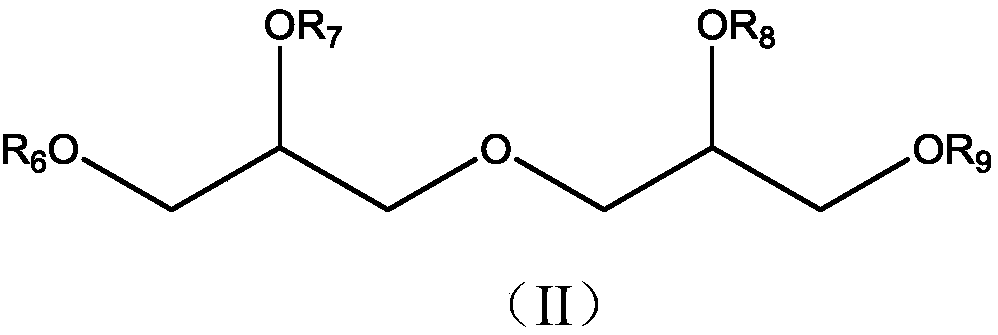External electron donor of catalyst for propylene polymerization, catalyst system for propylene polymerization, and preparation method and application of external electron donor and catalyst system
An external electron donor, propylene polymerization technology, applied in the field of olefin polymerization, can solve the problems of active advance, easy agglomeration, electrostatic fluctuation and so on
- Summary
- Abstract
- Description
- Claims
- Application Information
AI Technical Summary
Problems solved by technology
Method used
Image
Examples
Embodiment 1
[0053] Preparation method of Ziegler-Natta catalyst system for propylene polymerization:
[0054] 1) Under nitrogen protection conditions, at -40°C, the active center is added to the carrier;
[0055] 2) Gradually raise the temperature to 50°C, add aromatic ester, then raise the temperature to 100°C, keep it warm for 1 hour, continue to raise the temperature to 150°C, stir for 1 hour, and precipitate solid particles;
[0056] 3) The filtered solid particles are repeatedly washed alternately with active centers and inert diluents, and dried to obtain solid components;
[0057] 4) physically mixing the dried solids and 1,3-diether;
[0058] 5) The mixture, co-catalyst and external electron donor obtained in step 4) are added to the polymerization reactor in no particular order during the propylene polymerization reaction,
[0059] The molar ratio of carrier, active center, internal electron donor, cocatalyst and external electron donor in the prepared catalyst system is 0.2:0....
Embodiment 2
[0063]The preparation method of the Ziegler-Natta catalyst system for propylene polymerization in this example is the same as in Example 1, except that the external electron donor includes n-propyltrimethoxysilane, hydrogenated castor oil monoglyceride and diglycerol Dioleate, the molar ratio is 0.3:0.1:0.6.
[0064] Polymerization reaction of propylene: heat and vacuumize the 5L high-pressure reactor, remove air and water, replace with nitrogen, repeat three times, add catalyst system, first feed hydrogen, then feed propylene to make the total pressure in the kettle reach 0.35MPa.
[0065] Close the reaction kettle, raise the temperature of the kettle to 70°C, and start polymerization. After 2 hours of reaction, remove unreacted propylene to obtain polypropylene powder. The performance of the polymerization agent and the particle size distribution of the obtained polypropylene are shown in Table 1 and Table 2. .
Embodiment 3
[0067] The preparation method of the Ziegler-Natta catalyst system for propylene polymerization in this embodiment is the same as in Example 1, except that the external electron donor includes dicyclopentyl dimethoxysilane, hydrogenated castor oil monoglyceride acetate and di Polyglycerol dioleate, the molar ratio is 0.05:0.8:0.1.
[0068] Polymerization reaction of propylene: heat and vacuumize the 5L high-pressure reactor, remove air and water, replace with nitrogen, repeat three times, add catalyst system, first feed hydrogen, then feed propylene to make the total pressure in the kettle reach 0.35MPa.
[0069] Close the reaction kettle, raise the temperature of the kettle to 70°C, and start polymerization. After 2 hours of reaction, remove unreacted propylene to obtain polypropylene powder. The performance of the polymerization agent and the particle size distribution of the obtained polypropylene are shown in Table 1 and Table 2. .
PUM
 Login to View More
Login to View More Abstract
Description
Claims
Application Information
 Login to View More
Login to View More - R&D
- Intellectual Property
- Life Sciences
- Materials
- Tech Scout
- Unparalleled Data Quality
- Higher Quality Content
- 60% Fewer Hallucinations
Browse by: Latest US Patents, China's latest patents, Technical Efficacy Thesaurus, Application Domain, Technology Topic, Popular Technical Reports.
© 2025 PatSnap. All rights reserved.Legal|Privacy policy|Modern Slavery Act Transparency Statement|Sitemap|About US| Contact US: help@patsnap.com



